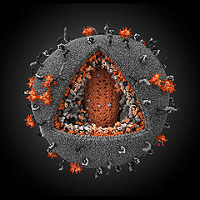Pharmacokinetics of Femalegra 100 mg
The study of pharmacokinetics involves the absorption, distribution, metabolism, and excretion of drugs. Femalegra 100 mg contains sildenafil citrate, a phosphodiesterase type 5 inhibitor. This medication is absorbed rapidly, with peak plasma concentrations reached within one hour post-administration. It is primarily metabolized in the liver by CYP3A4 and CYP2C9 enzymes, leading to active metabolites.
Upon oral intake, sildenafil in Femalegra 100 mg binds extensively to plasma proteins, about 96%, and the volume of distribution is approximately 105 L. This high distribution suggests significant tissue penetration. Its elimination half-life is around four hours, indicating the duration of action and influencing the dosing regimen.
Excretion occurs mainly via feces (approximately 80%) and urine (13%). The pharmacokinetics of Femalegra can vary based on age, liver function, and concomitant medications. Dose adjustments may be necessary for individuals with hepatic impairment or those taking inhibitors of the CYP3A4 enzyme.
Off-Label Uses of Femalegra
Although originally developed for erectile dysfunction, Femalegra finds off-label applications in female sexual arousal disorder. The mechanism involves enhancing blood flow to genital tissues, which may improve arousal and sensitivity. It may also be used in patients with Raynaud’s phenomenon, where it helps in vasodilation and improves blood flow to extremities.
Clinical research explores its efficacy in treating pulmonary arterial hypertension due to its vasodilatory effects on pulmonary arteries. Some studies investigate its role in increasing exercise capacity in such patients. The use of Femalegra in these conditions often requires a healthcare provider’s expertise and careful monitoring.
Additional investigations assess Femalegra’s potential in improving mood disorders linked to sexual dysfunction. However, these applications remain experimental and should be undertaken under clinical supervision. The safety profile in these contexts necessitates thorough risk assessment.
Femalegra Precautions
Before initiating treatment with Femalegra 100 mg, consider specific precautions. Cardiovascular status must be evaluated, especially in patients with underlying heart conditions. The risk of adverse cardiac events increases with physical exertion during sexual activity.
Patients with severe hepatic or renal impairment require dose adjustments to prevent drug accumulation and potential toxicity. Caution is also necessary for individuals with retinitis pigmentosa, as PDE5 inhibitors can affect retinal function.
Monitoring for side effects is crucial, particularly in older adults or those with comorbid conditions. Femalegra is contraindicated with nitrate medications due to the risk of profound hypotension. A thorough medication history helps avoid potentially harmful interactions.
Femalegra Interactions
Drug interactions play a significant role in the safety profile of Femalegra 100 mg. Co-administration with nitrates leads to significant drops in blood pressure, which can be life-threatening. Concomitant use of alpha-blockers requires caution and dosage adjustments to prevent hypotension.
Enzyme inhibitors such as erythromycin, ketoconazole, and ritonavir can elevate sildenafil plasma levels. This may necessitate a dose reduction of Femalegra. Conversely, enzyme inducers like rifampicin may reduce its efficacy, demanding increased dosing or alternative therapies.
Alcohol consumption can exacerbate the hypotensive effects of Femalegra. Patients should limit alcohol intake to maintain optimal therapeutic outcomes. These interactions highlight the importance of comprehensive medication reconciliation.
How to Cope with Side Effects of Femalegra
Managing side effects from Femalegra 100 mg requires vigilance. Common effects include headache, flushing, and dyspepsia. Hydration and over-the-counter analgesics might offer relief from mild headaches. Persistent or severe symptoms warrant medical evaluation.
Nasal congestion and dizziness may occur. Patients should stand slowly to minimize dizziness and avoid abrupt postural changes. Flushing often resolves spontaneously but can be bothersome; cool environments may provide comfort.
Vision changes like blue-tinged vision or blurred vision occur rarely but should be reported immediately. Discontinuing Femalegra is necessary if visual disturbances persist. Close monitoring aids in identifying any concerning trends in side effect profiles.
Purchasing Femalegra Without a Prescription
Acquiring Femalegra 100 mg without a prescription poses significant risks. It bypasses necessary health evaluations, increasing the chance of unrecognized contraindications or interactions. A healthcare provider ensures the drug is appropriate and that doses are safe.
Unregulated purchases may lead to counterfeit products with potential for harm. The absence of quality control in these scenarios is a concern. Ensuring a legitimate source is crucial for patient safety and therapeutic efficacy.
It is advised to follow legal channels and consult healthcare professionals before initiating treatment with Femalegra. For more on safe pharmaceutical practices, visit the FDA website.


